Mounting and Rigging Safety for Moving Head Fixtures
- Mounting and Rigging Safety for Moving Head Fixtures
- Why Rigging Safety Matters for Moving Head DJ Lights
- Start with a Risk Assessment and Load Plan
- Understand Fixture Weight and Working Load Limits (moving head dj lights)
- Choose the Right Rigging Hardware and Tools
- Hardware Selection Table (Typical Recommendations)
- Attachment Methods: Clamp, Bolt, or Safety Cable?
- Electrical, Thermal, and DMX Considerations During Rigging
- Installation Best Practices and Sequence
- Inspection and Maintenance Routines
- Training, Competency, and On-Site Supervision
- Emergency Procedures and Redundancy
- Case Study: Common Mistakes and How to Avoid Them
- LQE — Manufacturer Perspective and How We Support Rigging Safety
- FAQ — Common Questions About Rigging Moving Head DJ Lights
- Q: How much safety margin should I use when selecting couplers for moving head DJ lights?
- Q: Can I rely on a single safety cable?
- Q: How often should rigging hardware be inspected?
- Q: Is it OK to mix rigging components from different manufacturers?
- Q: What if a moving head fixture needs to be powered and serviced while hung?
- Contact LQE / View Our Products
- Sources and References
Mounting and Rigging Safety for Moving Head Fixtures
Why Rigging Safety Matters for Moving Head DJ Lights
Moving head DJ lights are dynamic, frequently repositioned fixtures used in clubs, concerts, theaters, and events. Their weight, moving parts, cabling, and heat output mean that poor mounting or rigging can create serious risks: falling fixtures, structural overload, electrical fires, and injuries to performers and audiences. This article gives practical, standards-aligned guidance for safe rigging and mounting of moving head DJ lights, aimed at lighting technicians, production managers, rental companies, and venue operators.
Start with a Risk Assessment and Load Plan
Before any physical work begins, perform a formal risk assessment and create a load plan. Identify rigging points, truss spans, available structural capacity, and the total load (fixtures + clamps + cabling + power/data supplies + safety devices). The risk assessment should include:
- Fixture inventory: model, quantity, individual weight, center of gravity, and power/data connections.
- Rigging geometry: truss type and span, motorized hoists or static points, and attachment methods.
- Environmental factors: wind (outdoor), humidity, heat, and audience locations under suspended loads.
- Human factors: who will perform rigging, their qualifications, and access equipment required (e.g., scissor lifts, bosun’s chairs, ladders).
Document the load plan in writing and keep it available on site. Use conservative assumptions and include contingency for future changes (reserve capacity).
Understand Fixture Weight and Working Load Limits (moving head dj lights)
One of the most common mistakes is underestimating fixture weight or the cumulative load. Moving head DJ lights vary widely by type — compact moving heads for clubs can be 6–12 kg, medium concert fixtures 15–30 kg, and moving head profile/spot or hybrid units sometimes reach 30–60 kg. Always use the manufacturer’s published weight and center-of-gravity (COG) data when available.
Best practice: select rigging hardware (couplers, shackles, safety cables) with a working load limit (WLL) at least 8–10 times the fixture weight. This conservative safety factor accounts for dynamic loads from movement, accidental impacts, and wear over time.
Choose the Right Rigging Hardware and Tools
Selecting the correct components for mounting moving head DJ lights is essential. Key hardware includes:
- Truss clamps/couplers rated for the load and matched to truss size.
- Safety cables rated above the fixture weight (steel aircraft cable with an appropriate swaged loop or rated quick link).
- Appropriate shackles and slings for hoists with identifiable WLL markings.
- Load-rated motorized hoists when suspending groups of fixtures; manual chain hoists only where permitted and rated.
Always use hardware from reputable manufacturers and verify WLL and certification markings. Never mix unidentified or unmarked hardware into the rigging chain.
Hardware Selection Table (Typical Recommendations)
| Fixture Type (approx. weight) | Recommended Minimum Coupler Rating | Recommended Safety Cable Rating | Recommended Safety Factor |
|---|---|---|---|
| Small moving head (6–12 kg) | 500 kg WLL | 200–500 kg WLL | 8–10:1 |
| Medium moving head (15–30 kg) | 1,000 kg WLL | 500–1,000 kg WLL | 8–10:1 |
| Heavy moving head / profile (30–60 kg) | 2,000 kg WLL | 1,000–2,000 kg WLL | 8–10:1 |
Notes: The table provides conservative, general recommendations; use actual manufacturer WLL and local codes for final selection. (Sources listed at the end.)
Attachment Methods: Clamp, Bolt, or Safety Cable?
Most moving head DJ lights mount to a truss with a medium-duty truss clamp plus a safety cable. Consider the following practices:
- Couplers should be tightened to the torque recommended by the clamp manufacturer and, if applicable, secured with a secondary locking device (e.g., safety pin or crossbolt with nut and cotter pin).
- A dedicated safety cable should always be connected between the fixture and a structurally independent point on the truss, so the fixture cannot fall even if the clamp fails.
- For long-term or semi-permanent installations, use dual clamps or a secondary mechanical attachment point to reduce reliance on a single clamp.
Electrical, Thermal, and DMX Considerations During Rigging
Cable management matters. Overheating or entanglement can cause fixture failure or unsafe conditions. Keep the following in mind:
- Route power and data cables to avoid sharp bends or load on strain reliefs. Use rated cable ties or Velcro to dress cables without crushing conductor insulation.
- Allow sufficient ventilation around luminaires to prevent heat buildup. Don’t trap fixtures against truss elements or stage rigging that could block airflow.
- Provide separate circuits or appropriately sized breakers for clusters of fixtures. Confirm inrush and running current against circuit capacity — LED fixtures still have inrush current to consider.
- Ensure DMX or network lines are protected from being pulled or pinched; use stage-rated connectors and secure data cables independently of power cables when possible.
Installation Best Practices and Sequence
Follow an organized sequence to reduce errors:
- Verify the load plan and confirm structural capacity and hoist ratings.
- Inspect all hardware for markings, corrosion, deformation, and certification.
- Install primary couplers and hand-tighten per torque specs; then secure the clamp locking mechanism.
- Attach the fixture, route cables, and attach safety cable(s) to independent structural points.
- Test mechanical movement (pan/tilt) and check for unexpected contact points or cable snags before powering lamp or LEDs at full intensity.
- Perform a static test to confirm no slippage for a duration (e.g., 10–15 minutes) before leaving rigged fixtures unattended above people.
Inspection and Maintenance Routines
Regular inspection is non-negotiable. Create an inspection schedule that includes daily visual checks while in use, weekly hardware inspections for rental/sticky gear, and detailed quarterly or annual inspections by a qualified rigger. Inspections should look for:
- Corrosion, cracking, or deformation of couplers, shackles, and truss sections.
- Worn or frayed safety cables, damaged swages, or missing thimbles.
- Loose fasteners, missing safety pins, and compromised fixture housings.
- Evidence of overheating, burn marks, or electrical smell around connectors.
Keep inspection records with dates, findings, and corrective actions. Remove any suspect item from service until cleared by a competent technician.
Training, Competency, and On-Site Supervision
Human error is a primary cause of rigging incidents. Ensure staff who perform rigging work are trained and assessed for competency. Training should cover:
- Load calculations and reading WLL markings.
- Proper use and inspection of couplers, hoists, and safety cables.
- Working at height procedures, fall protection, and rescue plans.
- Electrical safety relevant to powering moving head DJ lights.
Designate a rigging supervisor or head rigger for each event who holds final sign-off authority for the rigging system and the documented load plan.
Emergency Procedures and Redundancy
Plan for failures. Emergency procedures should include rapid shutdown steps for electrical fire or smoke, safe lowering procedures for stuck hoists, and a rescue plan for any personnel working aloft. Redundancy options to reduce single-point failures include:
- Dual safety cables or secondary mechanical attachments for overhead fixtures.
- Using two independent hoists for heavy loads instead of relying on one motor.
- Providing clearly marked emergency cut-off points for power to clusters of fixtures.
Case Study: Common Mistakes and How to Avoid Them
Example problem: A cluster of medium moving head DJ lights was hung with undersized clamps and a single thin safety cable. Over time, vibration loosened the clamp and the safety cable failed at its swage. Consequences: near-miss falling fixtures and equipment damage.
Fix: Implement standardized hardware procurement (no unidentified clamps), require stamped WLL markings, install dual safety cables with independent attachment points, and perform weekly torque checks during the event run.
LQE — Manufacturer Perspective and How We Support Rigging Safety
LQE was founded in 2008 and is headquartered in Foshan, China. We are a professional OEM/ODM stage lighting equipment manufacturer specializing in the R&D, production, and sales of middle- and high-end digital stage lighting. Our production base covers an area of about 10,000 square meters, has the ability to produce 100,000 lighting fixtures annually, and has 80 national patents.
Our range of stage lighting equipment is diverse, including various moving head lights and static lights, suitable for applications in theaters, music concert stages, studios, broadcasting, religious spaces, exhibitions, nightclubs, leisure venues, theme parks, and more. We are committed to providing first-class modern stage lighting equipment and exceptional customer service, all while maintaining the best value and cost-effectiveness in the industry. Our goal is to deliver high-quality, long-lasting lighting solutions that help stage designers and producers realize their vision. Our vision is to become the world's leading manufacturer of LED stage lighting.
How LQE’s capabilities relate to rigging safety:
- Design for serviceability: our moving head DJ lights are engineered with accessible mounting points and clear mechanical data (weight and COG), making accurate load planning easier.
- Quality manufacturing: our in-house production and quality control ensures consistent fixture weights and structural integrity, reducing variability that can compromise rigging calculations.
- Technical support: LQE provides fixture specifications, recommended rigging hardware, and installation guidance to clients to support safe use.
Core product lines that support safe installations:
- Waterproof stage lighting — IP-rated fixtures for outdoor rigging with sealed housings to prevent corrosion-related failures.
- Beam moving head light — compact, high-output, engineered with stable mounting brackets.
- Moving head hybrid light — combined spot/beam/wash units with clear COG documentation for rigging groups.
- Moving head wash light, moving head profile light — optimized for ventilation and mounting ease.
- LED effect light, LED studio light, LED par light — lightweight fixtures with consistent manufacturing tolerances.
- Lighting accessories — rigging hardware, clamps, and accessories designed to match LQE fixtures and tested for compatibility.
These product strengths and our production scale (100,000 fixtures/year) allow customers to standardize their fleets — a key element of safe rigging practices.
FAQ — Common Questions About Rigging Moving Head DJ Lights
Q: How much safety margin should I use when selecting couplers for moving head DJ lights?
A: Use a conservative safety factor. Industry practice often recommends 8–10:1 for permanent or frequently moved lighting fixtures to account for dynamic loads and aging hardware. Check local regulations and manufacturer recommendations.
Q: Can I rely on a single safety cable?
A: No. Always use at least one dedicated safety cable independent of the primary coupler. For critical hangs, dual safety cables or a secondary mechanical attachment is strongly recommended.
Q: How often should rigging hardware be inspected?
A: Visual checks should be performed daily when in use. Detailed inspections should be logged weekly for touring gear and quarterly or annually for installed systems. Any suspect item should be removed from service immediately.
Q: Is it OK to mix rigging components from different manufacturers?
A: You can mix components provided each item is properly rated, marked, and compatible; however, avoid using unidentified or unmarked hardware. Where possible, use certified systems designed to work together and follow manufacturer instructions.
Q: What if a moving head fixture needs to be powered and serviced while hung?
A: Only qualified technicians should service fixtures while suspended, and they should use adequate fall protection. Whenever possible, lower the fixture to the ground for major service.
Contact LQE / View Our Products
If you need rigging guidance, certified hardware recommendations, or moving head DJ lights engineered for safe hanging, contact LQE's technical support team. We provide product specifications, rigging data, and OEM/ODM services to help you design safe installations. To view our product range or request technical documents, contact customer service or request a product catalog from our sales team.
Sources and References
- U.S. Occupational Safety and Health Administration (OSHA), regulations and guidance on rigging and fall protection.
- Entertainment Services and Technology Association (ESTA) and PLASA recommended practices for rigging and stage safety.
- Manufacturer rigging manuals and product datasheets (industry consensus for inspection intervals and WLL marking practices).
- LQE internal product specifications and quality control procedures (LQE company data provided by the manufacturer).
What are the application scenarios of led profile light?
The led studio light manufacturer Cost Guide | LQE Ultimate Insights
The latest trends for professional stage lights in us 2026 | LQE Ultimate Insights
The latest trends for stage light in us 2026 | LQE Ultimate Insights
Distributor
How can I apply to become a distributor?
Simply fill out the contact form on this page or email us directly with your company information, market background, and cooperation intention. Our sales team will get in touch with you within 1–2 business days.
Can LQE help with product training and technical guidance?
Absolutely. We offer remote training sessions, user manuals, installation guides, and continuous technical support to help your team understand and sell our products with confidence.
What types of companies can become LQE distributors?
We welcome partnerships with companies that have experience in the entertainment, AV, lighting, or stage equipment industries. Whether you are a local reseller, importer, system integrator, or project contractor, we are open to exploring win-win cooperation.
What support does LQE offer to its distributors?
We provide our distributors with a full package of support, including:
Marketing materials and product catalogs
Technical training and manuals
Fast-response after-sales service
Exclusive regional pricing and policies (for qualified partners)
Priority access to new products and updates
1000w
What Kind of Certificates You Offer?
All kinds of certificates could be offered by LQE digital moving light factory, which depends on customer’s required, different pricing plan for different approval.
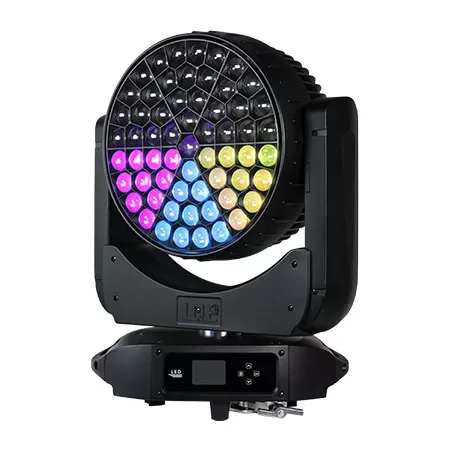
1000w 61x40w RGBW Stage Moving Head Wash Light LW1000
1000W 61x40W LED RGBW Mulichips Moving Head Wash Lights with Zoom (5°–50°), Covering Large Range and Long Distance. Designed to deliver a 5°–50° ultra-large zoom range to achieve a greater wash effect, illuminating stages and events with stunning lighting effects.
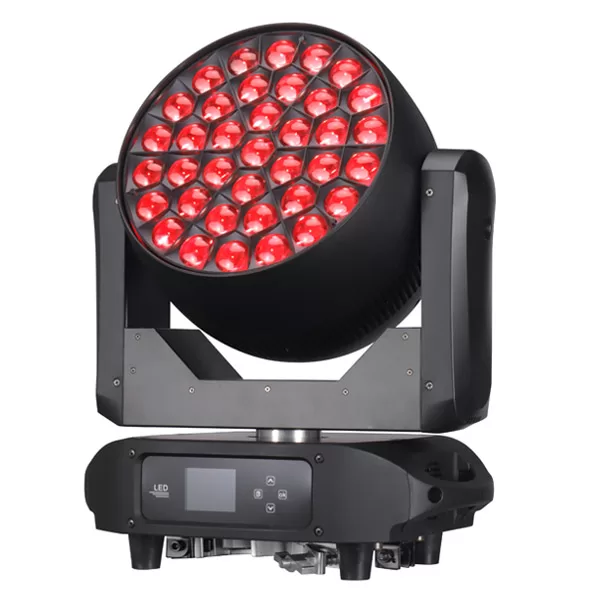
800w 37x40w RGBW Stage Moving Head Wash Light LW800
800W 37x40W LED RGBW Mulichips Moving Head Wash Lights with Zoom (5°-50°), Covering Large Range and Long Distance. Designed to deliver a 5°–50° ultra-large zoom range to achieve a greater wash effect, illuminating stages and events with stunning ring control lighting effects.

LED Moving Head Stage Wash Light LW200Z
The versatile moving head stage light provides a powerful lighting solution for theaters, concerts, and large outdoor performances. Suitable for theaters, TV stations, entertainment stages, and large outdoor performance scenes.

600w 19x40w RGBW Stage Moving Head Wash Light LW600 Zoom IP20
600W 19x40W LED RGBW Mulichips Moving Head Wash Lights with Zoom (5°–50°), Covering Large Range and Long Distance. IP20: Designed to deliver a 5°–50° ultra-large zoom range to achieve a greater wash effect, illuminating stages and events with stunning ring control lighting effects.

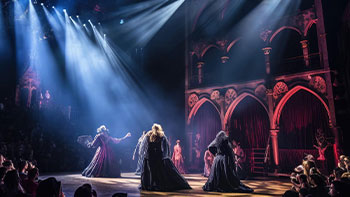
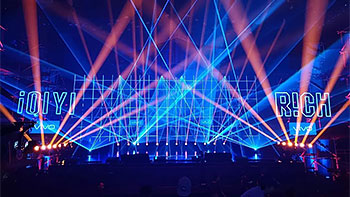

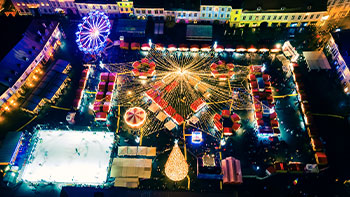








Linkedin
YouTube
Whatsapp: +8618924548390
TikTok